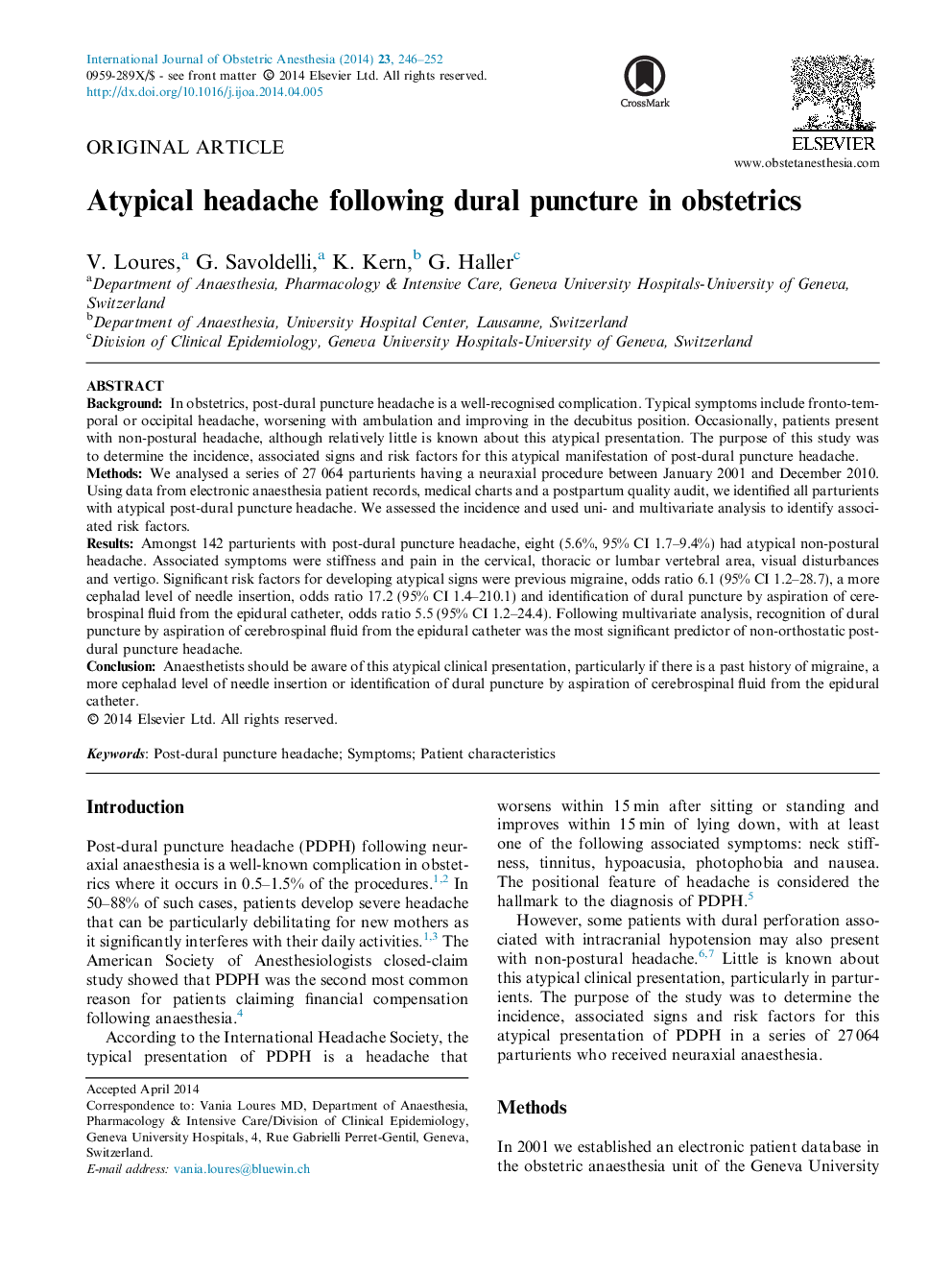| Article ID | Journal | Published Year | Pages | File Type |
|---|---|---|---|---|
| 5883288 | International Journal of Obstetric Anesthesia | 2014 | 7 Pages |
â¢The orthostatic feature of headache is considered a hallmark of post-dural puncture headache (PDPH).â¢We identified in a series of 27 064 parturients having a neuraxial procedures of whom 142 had PDPH.â¢Amongst patients with PDPH, 5.6% (95% CI 1.7-9.4%) had atypical non-postural headache.â¢Headaches in the postpartum period can always present a diagnostic challenge.
BackgroundIn obstetrics, post-dural puncture headache is a well-recognised complication. Typical symptoms include fronto-temporal or occipital headache, worsening with ambulation and improving in the decubitus position. Occasionally, patients present with non-postural headache, although relatively little is known about this atypical presentation. The purpose of this study was to determine the incidence, associated signs and risk factors for this atypical manifestation of post-dural puncture headache.MethodsWe analysed a series of 27 064 parturients having a neuraxial procedure between January 2001 and December 2010. Using data from electronic anaesthesia patient records, medical charts and a postpartum quality audit, we identified all parturients with atypical post-dural puncture headache. We assessed the incidence and used uni- and multivariate analysis to identify associated risk factors.ResultsAmongst 142 parturients with post-dural puncture headache, eight (5.6%, 95% CI 1.7-9.4%) had atypical non-postural headache. Associated symptoms were stiffness and pain in the cervical, thoracic or lumbar vertebral area, visual disturbances and vertigo. Significant risk factors for developing atypical signs were previous migraine, odds ratio 6.1 (95% CI 1.2-28.7), a more cephalad level of needle insertion, odds ratio 17.2 (95% CI 1.4-210.1) and identification of dural puncture by aspiration of cerebrospinal fluid from the epidural catheter, odds ratio 5.5 (95% CI 1.2-24.4). Following multivariate analysis, recognition of dural puncture by aspiration of cerebrospinal fluid from the epidural catheter was the most significant predictor of non-orthostatic postdural puncture headache.ConclusionAnaesthetists should be aware of this atypical clinical presentation, particularly if there is a past history of migraine, a more cephalad level of needle insertion or identification of dural puncture by aspiration of cerebrospinal fluid from the epidural catheter.
